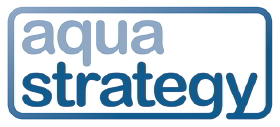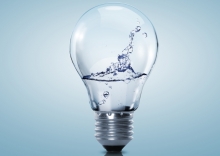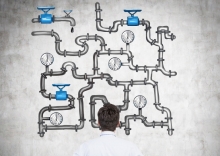Issue:
Policy recommendations from the World Bank's assessment of water and wastewater services in the Danube region.
One of the strengths of the Danube Water Program is that it is combining the inputs of the World Bank and the IAWD, the International Association of Water Supply Companies in the Danube River Catchment Area. The World Bank takes the lead on the wider policy assessment and reform, and a key contribution has been the preparation of an evaluation of the state of water and wastewater services provision in the region.
‘Water and wastewater services in the Danube region – A state of the sector’, was published in May last year. Due to shortcomings in available data, the report aims to encourage and inform dialogue on policy reforms. Although the authors do not therefore see the report’s recommendations as being definitive, there are nonetheless clear messages for the countries in the region.
Context
The fall of communism and European Union integration have driven a common trajectory in the region. Some 2.3 million people live on less than the regional level for extreme poverty of $2.50 a day. Groundwater is the dominant source of water supply.
Organisation of services
Services are mainly owned and provided at the municipal level, with around three quarters of the region’s population being served by one of more than 10,000 utilities. Some countries are promoting aggregation of service providers. Nine countries now have an independent regulatory authority with a formal role in tariff setting, although only three are dedicated to the water sector only.
Access to services
Although access to services is high in a global context, around 22.5 million people, or 17% of the population, mainly in rural areas, do not have piped supplies. Around 80% have a flush toilet, but only 66% are connected to a public sewer system.
Performance of services
Performance of water and wastewater services is generally below international standards, with non-revenue water and overstaffing continuing to present significant challenges. According to a proposed Water Utility Performance Index used in the report, performance has improved over the last ten years. Utilities with higher performance also generally charge higher tariffs.
Financing of services
Costs and tariffs have increased, but the region is far from implementing the principle of cost recovery included in the EU Water Framework Directive. Only two countries, Austria and Moldova, reply mainly on tariffs to finance the sector. Water and wastewater investments in the region are around $3.5 billion a year, compared to the estimated $5.5 billion a year needed to achieve EU and national targets.
Conclusions
Further analytical work is needed, due in particular to the limited availability of data, but some clear challenges are apparent:
- increased regulatory and institutional oversight by central government means clear accountability mechanisms are needed
- there are still 22.5 million people without access to piped water and 28 million people without flush toilets
- the long-term sustainability of investment in the sector is threatened due to service provider performance being below international standards
- the overall financing framework does not guarantee services in the long run, and utilities do not invest enough in asset management and development
Reference
‘Water and wastewater services in the Danube region – A state of the sector’, Regional report, May 2015, IBRD / World Bank, 2015
Available at: http://sos.danubis.org
Related article: The Danube initiative driving water utility reforms in eastern Europe
Related article: Albanian action on water utility reform
Keywords:
- World Bank, Danube, utility management






